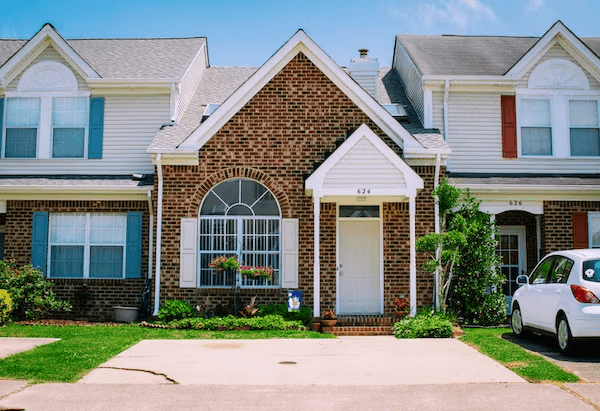Your home’s exterior siding is important in protecting against the elements, but it also adds to your home’s curb appeal. There’s much to consider as you work to balance the look you desire with your budget and the siding’s durability.
But never fear – we’ve got the insight you need to make the right decision. Let’s break down the most common types of siding, their pros and cons, and tips for success with your home renovation project.
1. Vinyl Siding
Vinyl is one of the most popular types of exterior siding for good reason. It comes in a range of colors, it’s affordable, and it lasts for decades. Vinyl is constructed using a sturdy plastic resin, which is lightweight and easy to install.
Pros
If you want a cost-effective exterior siding option, vinyl might be for you. Some of the key pros of vinyl include:
- Affordability. Vinyl is one of the most budget-friendly siding options.
- Low Maintenance. Vinyl requires little to no maintenance. All you have to do is keep it clean.
- Quick Installation. Vinyl siding is quick and easy to install, leading to lower costs and faster results.
- Customization. If you want to change the look of your vinyl siding in the future, you can easily paint it.
Cons
Vinyl siding is great, but it’s not necessarily for everyone. Its main con is its vulnerability to cracks, which makes it a less-than-ideal fit for areas prone to strong winds.
2. Metal Siding
Metal siding is usually made with aluminum or steel. Steel is the more durable of the two and can last for 30 years with little maintenance.
Pros
Those looking for strong and reliable siding might want to opt for metal. Some of its unique benefits include:
- Durability. Metal siding can last decades without much upkeep, particularly if it’s not exposed to a lot of moisture.
- Fire-Resistance. Aluminum and metal are resistant to fires, improving your home’s safety.
- Eco-Friendliness. Metal is a naturally occurring and recyclable resource, so metal siding is one of the eco-friendly siding options.
Cons
While metal exterior siding is sturdy, it can come with some challenges to consider as you make the right choice for your home, including:
- Limited Options. Metal siding tends to come in limited colors and styles compared to other types of siding.
- Higher Costs. Because it’s heavier and can take some extra effort to install, metal siding may be more expensive than other options.
3. Fiber Cement Siding
One of the newer siding materials, fiber cement, combines cellulose fiber, sand, silica, and cement. This is an attractive material for your home and comes in various textures and colors, including wood grain.
Pros
It’s hard to pass up on the benefits of fiber cement siding, especially if you’re looking for results that last. Some of the pros to keep in mind include:
- Durability. Fiber cement can last between 50 and 60 years with minimal maintenance.
- Resistance. Fiber cement is a sturdy material that can withstand extreme environments. It doesn’t contract and expand with temperature changes and is resistant to moisture rot or insect damage.
- Costs. Though it can have higher upfront costs, fiber cement is a cost-effective choice as a long-term investment.
Cons
There are few downsides of fiber cement; unless you’re not a fan of the way it looks, it’s likely to be a fine option for your home. However, fiber cement can be more expensive than something like vinyl siding due to the complex installation steps that come with it.
4. Engineered Hardwood Siding
Hardwood is a common siding material, but engineered hardwood siding is preferable to natural wood and is resistant to rot, mold, and chipping. It’s affordable, eco-friendly, and comes in many versatile color options.
Pros
We love engineered hardwood because it offers a beautiful finish with far less to keep up with than natural wood. Some of the benefits to consider include the following:
- Aesthetics. Engineered wood is designed to look like wood without the downsides and high maintenance.
- Eco-Friendliness. Because it uses less of a tree per plank than solid hardwood and consumes less energy, engineered hardwood is an eco-friendly alternative.
- Affordability. Engineered wood is often less expensive than other materials and is cost-effective over time.
Cons
Like any other kind of siding, engineered hardwood can be damaged by excess moisture. Luckily, working with a professional when installing your siding can help you ensure the job gets done right.
Which Type of House Siding Is Right for You?
From affordable vinyl siding to long-lasting fiber cement siding, you have plenty of options for residential siding on your Texas home. There’s no wrong answer. It all depends on the best siding materials for your needs and budget.
If you’re ready to start your siding project, Americraft is the top Texas siding contractor. We can help with a range of home siding to ensure you have the look and durability you want. Contact us today to plan your residential siding project!

